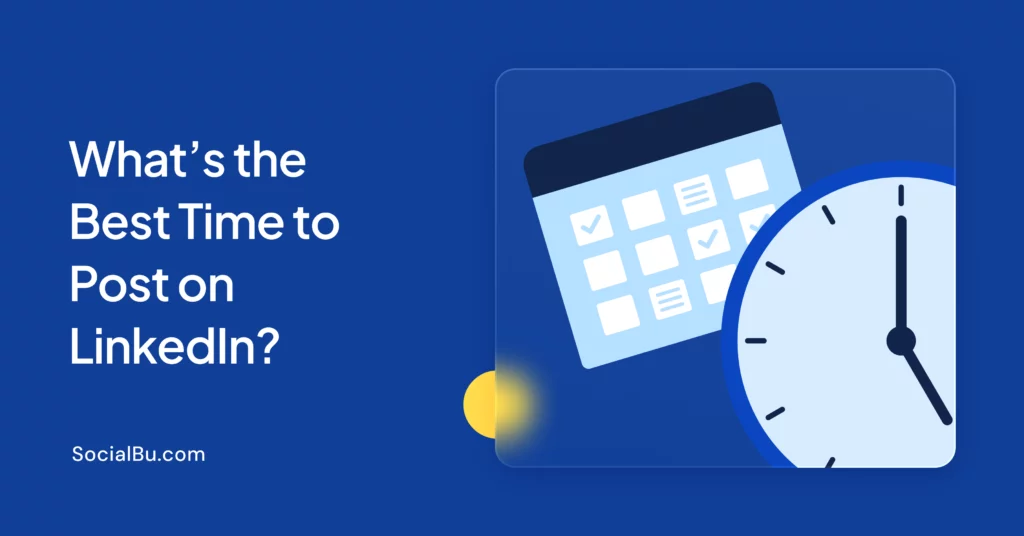Have you ever felt like your competitors’ social media strategy gives them an unfair advantage, while you’re stuck testing, tweaking, and second-guessing every post?
Here’s the thing: they might not be better, but they might just be better at watching you.
Reverse engineering competitor strategies isn’t sneaky. It’s smart. The best marketers do it. Most brands that grow fast on social media aren’t reinventing the strategy; they’re borrowing it, remixing the tactics, and getting their edge by out-learning the competition.
In this post, you’ll learn exactly how to do that.
We’ll break down:
- What to look for in a competitor’s social media presence
- The tools top marketers use to gather and compare data
- How to extract insights you can act on
- And how to avoid copying blindly (because that never ends well)
This guide will help you build smarter, faster, and more informed social media strategies that outperform the rest.
What Does It Mean to Reverse Engineer a Competitor’s Social Strategy?
To reverse engineer a competitor’s social media strategy means breaking down their online activity, such as posts, formats, timing, and audience interactions, to figure out what’s working, why it’s working, and how you can do it better.
It’s More Than Just Spying
You’re not just lurking on their Instagram or scrolling through their TikToks while sipping coffee. You’re analyzing and digging into:
- Content themes: What topics or formats do they keep repeating?
- Engagement patterns: Which types of posts get more reactions?
- Audience targeting: Who are they speaking to, and how?
The goal isn’t to imitate. It’s to extract meaning.
Think: What is their content doing and why is it resonating? This is where competitor content analysis steps will help you. You’re looking for the building blocks behind every successful post.
From Raw Data to Actionable Insights
This isn’t about surface-level tracking like “oh, they post Reels on Thursdays.” It’s about turning observations into insights you can act on.
For example:
If a competitor is constantly posting before-and-after carousels and their audience floods the comments with results or requests, it tells you their people respond to proof-based content.
That’s not just a fun fact. That’s strategy gold.
By running a content gap analysis and layering in posting frequency benchmarking, you start to spot exactly where your content can outperform theirs.
Why This Matters for You
A strong reverse engineer competitor social strategy approach turns social scrolling into a strategic direction.
Because now you’re not guessing what to post, but you’re seeing what already works, understanding why, and building your plan with intent.
Why Is Analyzing Competitor Post Performance So Crucial?
If you’re trying to grow your brand on social, you can’t rely on instincts alone. You need data. That’s where analyzing competitor’s post performance comes in. It gives you a shortcut to what’s already proven to engage your ideal audience.
And here’s the kicker: your competitors have already tested the waters. Their best (and worst) performing posts are clues. You just need to know how to read them.
To Establish Realistic Benchmarks
You can’t improve what you don’t measure, and you definitely can’t measure in a vacuum.
Let’s say your engagement rate on Instagram is 1.2%. Is that good? Terrible? Amazing?
Without context, it’s impossible to tell.
That’s why engagement comparisons are vital. By studying your competitors’ posts, you can:
- Set baseline expectations for your performance
- See how often they post (a key part of posting frequency benchmarking)
- Track what types of content lead to spikes or dips in engagement
The median engagement rate across all industries on Instagram is just 0.43% per post. A 1% rate could put you in the top tier for your niche.
To Identify and Fill Content Gaps
Your competitors may be posting a lot, but they’re not posting everything.
This is where content gap analysis becomes your unfair advantage.
By auditing what topics your competitors consistently ignore (or fail to go deep on), you can:
- Own a niche conversation
- Target a problem their audience still needs solved
- Build topical authority that stands out
Example: If every competitor is focused on product specs, but no one is talking about use cases or outcome-driven stories, boom. That’s your content gap.
To Understand Your Shared Audience Better
Your competitors’ audience is your audience. Or at least it should be.
This makes every comment, question, and emoji they receive on their posts a free insight into your ideal customer’s brain.
This is where audience targeting insights shine.
Look at:
- What content triggers the most comments?
- Are people tagging friends, asking questions, or sharing stories?
- Are they praising the content or pointing out confusion?
All of this is a form of social listening, and it’s way more helpful than running expensive surveys.
Why This Matters for You (and How to Automate It)
Manually tracking every post from 5+ competitors? Exhausting. That’s why tools like SocialBu competitor analysis (via RSS Feed or monitoring workflows) are game-changers. They help you track, collect, and compare content without wasting hours.
The 5-Step Guide to Reverse Engineering Competitor Social Strategy
This 5-step guide will teach you how to spy on competitor social posts and reverse engineer the social media strategy of competitors. So, you can uncover what’s working and outsmart them with smarter, faster moves.
Step 1: How Do I Identify My Real Social Media Competitors?
If you think your competitors are just brands that sell the same product, think again. You’re not just competing for customers here. You’re competing for attention.
To build a high-performing social media strategy for competitors, you need to track both product competitors and content competitors.
Map Out Direct vs. Indirect Competitors
- Direct Competitors are easy to spot: they sell similar products or services to the same audience. If you’re a fitness app, another fitness app is your direct rival.
- But indirect (or content) competitors are just as important and often overlooked.
These are brands that don’t sell the same thing, but still attract the same audience with overlapping content. For example:
- A recipe blog vs. a meal kit service
- A SaaS tool vs. a productivity newsletter
- A DTC fashion brand vs. a lifestyle influencer
These content-first brands compete with you on ideas, not offers. It makes them influential players in your audience’s feed.
**Understanding both types is essential for full-spectrum competitor content analysis steps.
Use Google and Social Platforms to Find Them
Here’s how to get practical.
On Google:
- Search for your primary keyword, like “social media strategy of competitors”, and check who ranks organically. These are the players already optimized for your space.
- Use modifiers like “tools,” “examples,” “case studies,” or “2025” to expand your view.
On social platforms:
- Use built-in recommendations like “Suggested for You” or “You might also like.”
- Explore who your audience follows or interacts with frequently.
- Tools like BuzzSumo or Brand24 can surface top-shared content for a given keyword, showing you who’s dominating the conversation.
Pro Tip: Once you’ve identified a few, use SocialBu-supported competitor analysis features (RSS feeds or saved searches) to monitor their content in one dashboard.
Why This Matters for You
You can’t reverse engineer a brand you’re not watching. And you shouldn’t only watch brands that look just like you.
To truly reverse engineer competitor social strategy, you need a mix of competitors who:
- Sell the same thing as you (direct)
- Serve the same people as you (indirect)
That’s how you build a complete view of what’s working in your space and what’s missing.
Step 2: What Metrics Should I Track for Competitors?
Tracking your competitors blindly won’t help. You need to know what to track and why. The right metrics will help you spot what’s moving the needle in their strategy and what’s just overrated.
When reverse engineering the social media strategy of competitors, it’s essential to combine quantitative and qualitative data. Think of it as tracking both what they do and how their audience feels about it.
Key Quantitative Metrics (The “What”)
This is your numerical layer. Start by creating a spreadsheet to track this weekly or bi-weekly:
| Metric | Competitor A | Competitor B | Your Brand |
| Posting Frequency (per week) | 5 | 8 | 3 |
| Avg. Engagement Rate (%) | 1.7% | 0.9% | 1.2% |
| Follower Growth (WoW) | +250 | +150 | +100 |
| Content Mix (% Video) | 40% | 15% | 25% |
This data helps you run posting frequency benchmarking and set clear engagement comparisons.
Are they growing faster because they post more? Or because their videos outperform yours? These are the types of questions you’ll start answering.
Key Qualitative Metrics (The “Why”)
This is where you go beyond the numbers and decode the strategy. Track things like:
- Content Pillars: What 3–5 themes keep coming up? (e.g., “User Wins,” “Product Tutorials,” “Behind-the-Scenes”)
- Brand Voice: Is their tone witty, educational, bold, or corporate?
- Emotional Triggers: What kinds of posts spark strong reactions?
- Audience Sentiment: Scan comments. Are people praising the post? Tagging friends? Asking questions?
These insights unlock deeper audience targeting insights and help refine your own tone and content strategy. Pair them with a content gap analysis to identify where your voice can stand out.
Why This Matters for You
If you don’t track this data, you’re guessing. But once you’ve benchmarked their moves, you’re positioned to outperform them with smarter content, sharper engagement, and platform-native strategy.
Use this as a foundation to analyze competitor post performance over time, not just in one go. Social strategy is evolving constantly.
Use SocialBu competitor analysis to automate this tracking, so you spend more time optimizing, not spreadsheeting.
Step 3: How Can Engagement and Content Themes Be Analyzed?
Once you’ve collected the data, it’s time to dig into patterns. This is the heart of analyzing a competitor’s post performance. It is not about just tracking numbers, but interpreting what they mean.
When you break down post-level engagement and recurring content themes, you reveal the real strategy behind your competitor’s success. This is where you stop guessing and start shaping smarter campaigns for your brand.
Identify Their “Greatest Hits”
Start by reviewing the last 3–6 months of posts from your top competitors.
Pick out their 5–10 most engaging pieces. The ones with the highest likes, shares, saves, or comment counts. Then, observe:
- What format is it? (e.g., Reel, carousel, static, live)
- What tone do they use?
- Is it a how-to, story, behind-the-scenes, meme, or testimonial?
This process is a critical step in reverse-engineering a competitor’s social strategy. You’re looking beyond surface appeal to identify:
- Recurring themes
- Audience response
- Emotional hooks
Use this analysis to inform your broader social media strategy of competitor insights.
Uncover Their Content Pillars and Perform a Gap Analysis
Categorize their top-performing content into broader pillars like:
- Education (e.g., tutorials or guides)
- Authority (e.g., industry stats or predictions)
- Social Proof (e.g., user stories or testimonials)
- Entertainment (e.g., memes, trends, viral videos)
Now, layer on content gap analysis. What are they not posting?
- Are they avoiding sensitive topics?
- Is there a lack of storytelling or long-form breakdowns?
- Are they underutilizing specific formats like live Q&As or carousels?
Every blank spot is your opportunity to fill the void and own a unique angle.
Decode Their Calls-to-Action (CTAs)
CTAs are where strategy gets real. What your competitors ask their audience to do tells you what they value.
Common CTAs to watch for:
- Engagement: “Comment below,” “Tag a friend”
- Traffic: “Click the link in bio,” “Swipe up to learn more”
- UGC: “Share your story with us,” “Use our hashtag to be featured”
- Sales: “Only 24 hours left,” “Shop now”
This CTA breakdown reveals their primary goals and what resonates with the audience. Use it to align your CTAs with your own content goals.
Why This Matters for You
When you analyze competitor post performance at this level, you don’t just learn what works; you learn why it works.
With these insights, you can develop your pillars, improve your CTAs, and fill blind spots your competitors aren’t covering.
Pro Tip: Found a clear content gap? Use SocialBu’s free AI Post Generator to instantly turn that theme into multiple caption ideas, formats, or hooks.
Step 4: How Do I Reverse Engineer Their Posting Schedule and Hashtags?
Timing and tags can make or break reach. That’s why decoding when your competitors post and which hashtags they rely on is a smart move when studying the social media strategy of competitors.
Let’s break it down fast.
Conduct Posting Frequency Benchmarking
Track the exact day and time your competitors publish. Do they post:
- Daily or 3x a week?
- Always in the morning?
- Weekends only?
This is called posting frequency benchmarking.
It helps you spot their high-engagement zones and align your timing strategy accordingly without worrying about trial and error.
Use a simple spreadsheet or automate it with SocialBu competitor analysis (RSS feed or monitoring tools).
Perform Strategic Hashtag Research
Hashtags aren’t dead, they’re just misunderstood.
To decode their strategy, categorize your competitors’ most used hashtags:
| Tag Type | Example | Purpose |
| Broad (high density) | #marketing | Reach a wide audience |
| Niche/community | #contentstrategytips | Target a specific engaged group |
| Branded | #SocialBuTips | Build brand identity and user engagement |
Hashtag research helps you identify what’s working and how to stand out with better tag mixes and placement.
Pro Tip: Look for which tags appear most often on their high-performing posts. Then test them against new ones using SocialBu’s Hashtag Analysis Tool.
Why This Matters for You
If you ignore timing and hashtags, you’re leaving visibility on the table. These insights help you show up when and where your audience is most active with tags they’re already following.
Step 5: How Do I Turn These Insights Into a Winning Strategy?
So you’ve gathered all this intel. Now what?
The real power of analyzing the social media strategy of competitors isn’t in just collecting data. It’s what you do with it. If you’re not applying what you’ve learned, you’re just hoarding screenshots.
Here’s how to flip competitor insights into a strategy that drives results.
Create a “Steal, Improve, Innovate” Framework
Not everything your competitor does is worth copying, but some of it? Gold.
- Steal (Strategically): Identify the content types and themes that resonate with your shared audience. If their behind-the-scenes stories or tutorial videos are consistently pulling high engagement, take note. This is where your reverse-engineering competitor social strategy work pays off.
- Improve: Can you take their best-performing idea and do it better? Maybe they’re using carousels to share tips. Can you repurpose that into a slick video series? This is how you close the engagement comparisons gap.
- Innovate: Use your content gap analysis to spot what they’re not doing and go own that space. That’s how you stop playing catch-up and start leading the conversation.
Pro Tip: Your goal isn’t to blend in, but it’s to stand out with intention. That means using competitor data to sharpen your unique positioning.
Use Your Findings to Fuel Your SocialBu Workflow
Now it’s time to plug all of this into your execution engine. Here’s how to activate your findings using SocialBu:
- Content Curation: Noticed your competitor consistently shares thought-leadership articles from specific sources? Use SocialBu’s Content Curation tool to find and schedule similar (or better) pieces and add your take.
- AI Post Generator: Found a competitor campaign that hit the mark? Use their approach as a springboard. Feed your “Improve” or “Innovate” ideas into SocialBu’s AI Post Generator to brainstorm fresh captions, formats, and hooks based on the gaps you’ve identified.
- Social Calendar: You’ve already done posting frequency benchmarking. Now build a smarter content calendar. Use SocialBu’s visual planner to schedule your posts at the right times, keeping consistency without burning out.
- Analytics: Don’t just hit publish and walk away. Use SocialBu’s analytics to track if you’re gaining attraction. Are you closing the loop on those audience targeting insights? Are your new post types performing better than before? Keep testing and refining.
Turning competitor analysis into strategy is an ongoing feedback loop. The goal isn’t to mimic. It’s to spot opportunities they’ve missed, deliver content your audience wants, and build a social media strategy of competitors that works for you.
Next Steps and Key Takeaways
Here’s the thing most marketers get wrong. They assume their competitors are winning because they’re bigger, luckier, or have a better product. Truth is, they’ve just been more deliberate. They’ve done their homework, and now, so have you.
Reverse engineering your social media strategy of competitors isn’t about copying them pixel for pixel. It’s about using competitor content analysis steps to uncover what drives results and then building your edge from there.
By now, you’ve learned how to:
- Reverse engineer competitor social strategy without second-guessing
- Spot content trends and patterns using real engagement comparisons
- Turn observations into audience targeting insights
- Identify posting rhythms, hashtag trends, and missed opportunities
You’ve got the map. Don’t stop at analysis.
Put Your Insights to Work with SocialBu
Strategy without execution is just a spreadsheet. And a spreadsheet won’t move your metrics.
This is where SocialBu comes in. It takes everything you’ve just discovered and helps you act on it:
- Use the AI post generator to turn competitor ideas into even stronger, on-brand content
- Run content gap analysis inside your workflow to fill what others are missing
- Plan smarter using the Social Calendar, powered by your newly benchmarked timing
- Monitor performance with built-in Analytics so you know if you’re closing the gap
Bottom line? This is your moment to stop chasing trends and start setting them.
Ready to Win on Purpose?
You’ve already done the hard part: understanding your competitors. Now let’s turn those insights into an unfair advantage.
Plan, create, and execute a more innovative social media strategy for competitors, all with SocialBu.
Start Your Free SocialBu Trial Today and Outsmart Your Competition.







